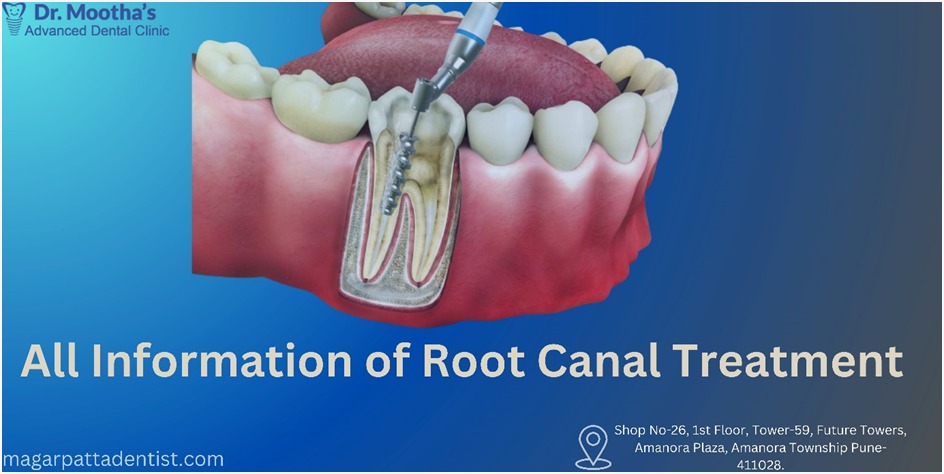Blog
All Information of Root canal treatment
Root canal treatment is the cleaning of the root of the tooth. The upper decayed part of the tooth is cleaned with a machine by injecting a solution into that tooth. Each tooth root is gradually cleaned using various technologies and medicines. The root is cleaned, and the decayed vein is removed.
'Root Canal Treatment' or RCT has become a household word these days. Common people have many misconceptions and fears about this dental treatment. Many people say that when they go to the dentist with a toothache, they directly recommend root canal treatment and have to pay a lot of money for the treatment. People try many home remedies to reduce toothache as a middle option. This could involve applying clove oil, chewing guava leaves, using a specific type of toothpaste, or going to the drugstore to purchase and take medication.Many of these short-cut treatments lead to less benefit and more damage to the tooth, and finally, when the toothache becomes dangerous, the only option left is to go to the dentist. And of course root canal treatment is often the last option to save this tooth.
The part of the tooth that is visible in our mouth is made up of three layers. The top layer is 'Enamel'. This is called a tooth protector. There are no nerves in this area.So when the tooth decay starts in the first coat, the patient is not aware of any kind. Only black spots appear on the teeth, but since there is no pain, it is often neglected. Layer number two is called 'Dentin'. Since it contains some nerves, when the tooth worm reaches this layer, many patients start to experience tingling when they eat hot, cold, or sweet foods. A cavity at this stage can often be filled by a dentist with small tooth fillings (cements);Many patients try home remedies in such cases and get temporary pain relief, but the problem of tooth decay continues
When this worm reaches the third layer, which is called the 'pulp', then the patient begins to pound the tooth, swelling, pus filling, fever, temporary movement of the tooth, one side of the face, ears become numb, and while drinking water, the patient It hurts a lot while eating. 'Pulp' is the living part. In which there is a lot of blood supply along with nerves. When the tooth decay gradually destroys, the 'pulp' starts to decay. The way to recover from the huge pain that occurs then is to do 'root canal treatment' of that tooth.
Many people think that RCT (root canal treatment) is very painful. They believe the procedure involves removing the tooth’s root, which ultimately causes the tooth to fall out. Because of such misconceptions, many people end up losing their decayed but otherwise strong teeth.'Root canal treatment' is the cleaning of the root of the tooth. The upper decayed part of the tooth is cleaned with a machine by injecting a solution into that tooth. Then, each root of the tooth is gradually cleaned, in which several techniques and medicinal substances are used. Clean the tooth to the root and remove the decayed vein. And of course, the living things inside the tooth; but the toothache also stops when the cavity is gone.
YouTube (
https://youtube.com/shorts/q_r-7MnuKeo?si=yPxjs3JEczvMwBcl)
By taking X-rays from time to time, the dentist examines the root of the tooth and the wound in the surrounding bone. Once the infection subsides, permanent cement is filled into the root of the tooth and then to the top, sealing the tooth. After the root canal treatment is complete, the next step is to cap the tooth. Many people have stopped having toothaches; now the cement is filled, so what is the need for a cap? So they ignore it and start using that tooth very actively. But remember, root canal means we are killing the tooth; the tooth no longer has any blood supply, so it has limited strength. In such a case, if the force of your chewing continues to fall on that tooth, there is a possibility of the tooth breaking. And once a tooth is broken, there is no other option but to extract it.
Then the tooth goes and it's 'root canal treatment' To avoid all this, it is very important to cap the tooth within a week or two after the RCT, so that all the force of eating and drinking falls on that cap and the inner tooth remains fairly safe. There are many types of caps available today. If you get your teeth checked by your dentist at least once a year, early treatment will prevent the tooth from getting to the root canal.

